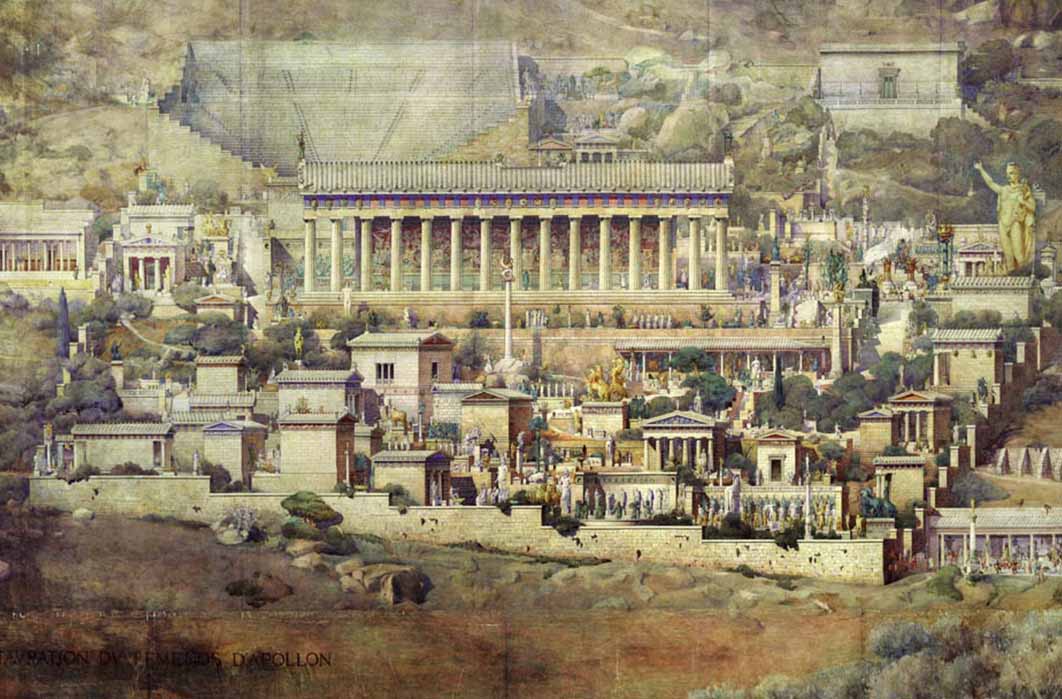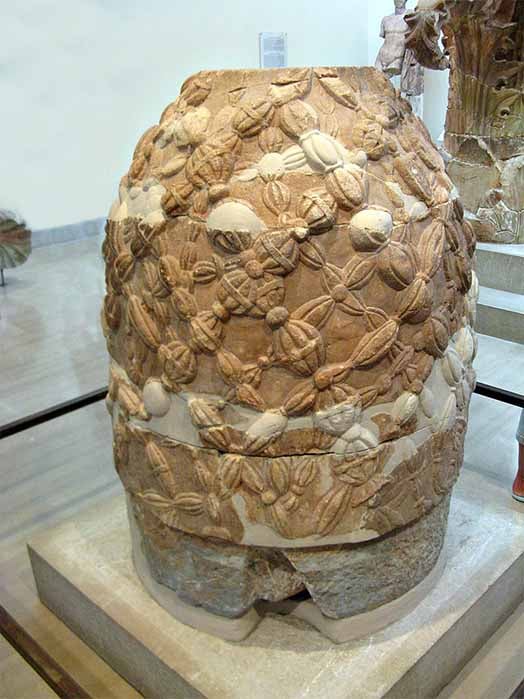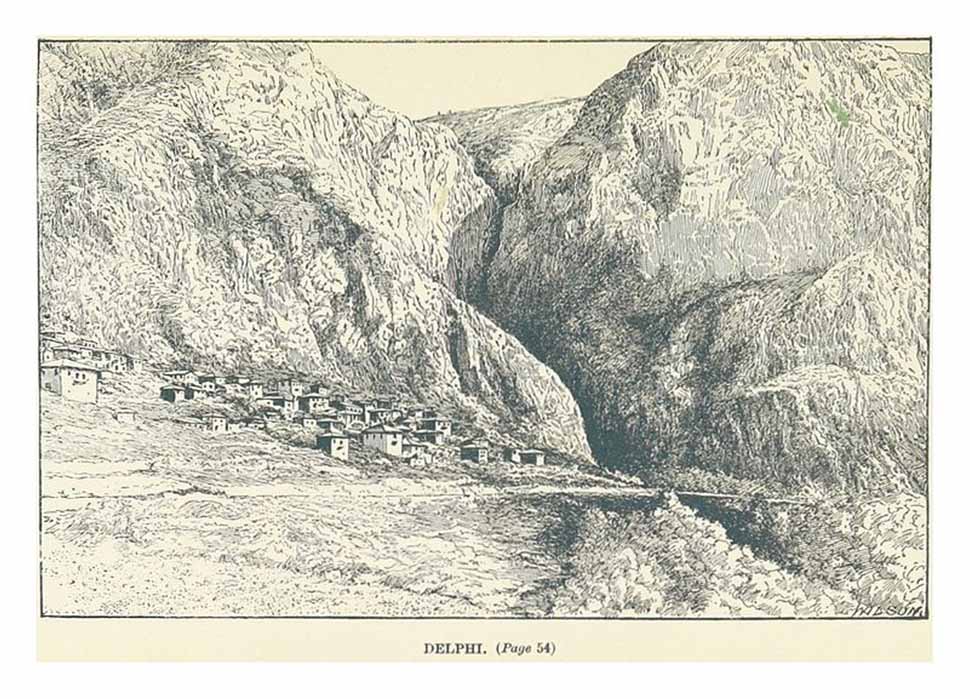
Legends Of The Oracle Of Delphi At The Centre Of The World
The ancient Greek city of Delphi, located on the slopes of Mount Parnassus, was home to the main Temple of Apollo and the renowned Oracle of Delphi. According to legend, the site was identified by Zeus, the King of the Gods, who sought to find the epicentre of the earth goddess Gaia, or his ‘Grandmother Earth’. Zeus sent two eagles flying from the eastern and western extremities of the earth and they crossed paths over Delphi. Zeus marked the spot with a large, egg-shaped stone called the omphalos, which means "navel" and the ancient Greeks revered this site as the centre of the world. The site had since been recognized as a UNESCO World Heritage Site due to its immense influence in the ancient world.

The Omphalos stone in the Delphi Museum (Юкатан /CC BY-SA 3.0)
Homeric literature often references the sacred Temple of Apollo. In the Iliad, Achilles refused to accept Agamemnon's offer to reconcile even if it included all the riches held within the “rocky Pytho’s hallowed stone floor”. Achilles was referring to the treasures at Delphi, of course, and as it happens an excavation at Delphi has yielded an increasing number of artifacts such as pottery, bronze, and tripod dedications since the latter quarter of the eighth century BC. The variety of artifacts, the presence of prominent dedications, as well as the huge quantity of rich objects, lends support to Achilles’ claim. In the Odyssey, Agamemnon crosses the same “stone floor” to receive a prophecy from Apollo’s Oracle of Delphi. In Theogony, Hesiod also refers to Pytho “in the hollows of Parnassus”. This implies that the earliest known date of the oracle's existence is the eighth century BC, the probable date of composition of the Homeric works.
Even by the 19th century, Delphi was still frequently visited by many renowned artists who proceeded to create works based on the site. These works included diaries, sketches, and views of the region, as well as depictions of coins. These illustrations typically reflected the spirit of romanticism, as seen in the drawings of German archaeologist Otto Magnus von Stackelberg. Notable figures such as the poet Lord Byron, who was accompanied by poet and painter William Haygarth, also visited Delphi and wrote about their experiences.

Site of Delphi. Vulva of the Earth, Gaia, with the two Phaedriades above, resembling her breasts. In this drawing the village of Castro still occupies the site (Public Domain)
Apollo Seizes Delphi from Gaia
A seventh-century BC Homeric Hymn to Apollo, connects Apollo to the site through his epithet Δελφίνιος, (Delphinios, “the Delphinian”), and relates the myth of Apollo's journey in search of a location for his oracle. He was advised by his companion Telephus to choose Krisa, "below the glade of Parnassus". North of the valley junction, a spur of Parnassus looms over the valley, and it was here that Krisa, a Mycenaean stronghold, was located. Middle Helladic in origin (1900 to 1550 BC), Krisa was mentioned in the Iliad's Catalogue of Ships.
The site was originally an oracle of the earth goddess Gaia. Apollo built a temple and killed Gaia’s son, the serpent Pytho who guarded the site, and drove Gaia away, thus claiming the Temple of Delphi for his own oracle. When some Cretans from Knossos later sailed up to Apollo’s temple, Apollo transformed into a dolphin and cast himself on the deck of their ship. In awe, the Cretans did not dare to remove him from the ship, and so he guided them around Greece and back to Krisa, where the ship ran aground. The hymn tells that the Cretans cried out to Apollo in fear, “O Lord, seeing that Thou hast led us away from our kin and the land of our fathers, how are we now to exist?” Apollo laughed at them and ordered them to slaughter the sheep that men will bring in abundance to his temple, each holding the sacrificial knife. Thus Apollo made his home in a shrine with Cretan priests offering him reverential worship, known as the worship of Delphineus, or "the Dolphin".
- Delphi, Centre of the World and Home to a Powerful Oracle
- Keepers of the Sacred Flame from Ancient Rome to India
- The Arrows and Ardor of Apollo, The Sun God
There are of course other versions of this story, namely that Apollo shoots his first arrow as a new-born, killing the serpent Pytho, son of Gaia, who had been guarding the area. Apollo was then forced to flee and serve for eight years to be forgiven for the murder of Gaia's son. Another legend tells that Apollo killed the chthonic serpent Pytho because the serpent was preventing Leto from bearing Apollo and his sister, Artemis.




